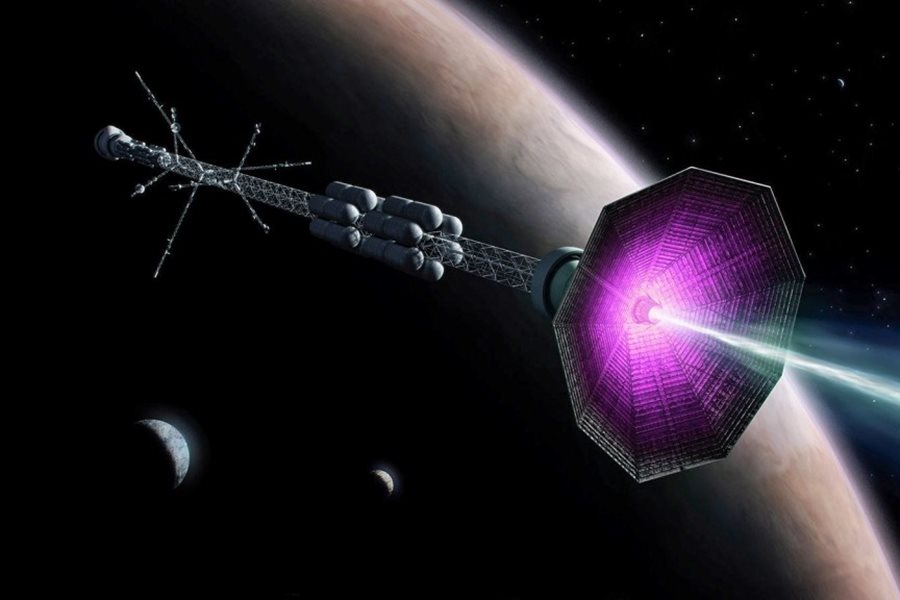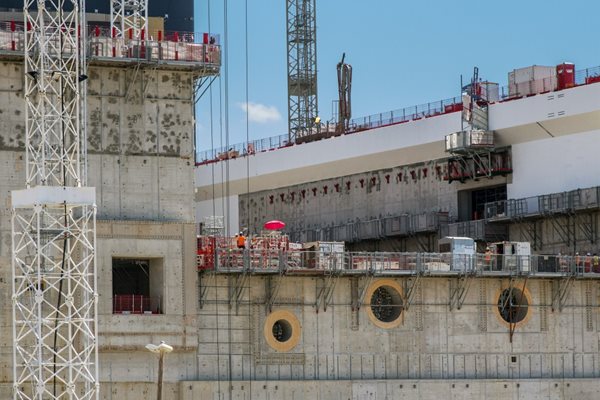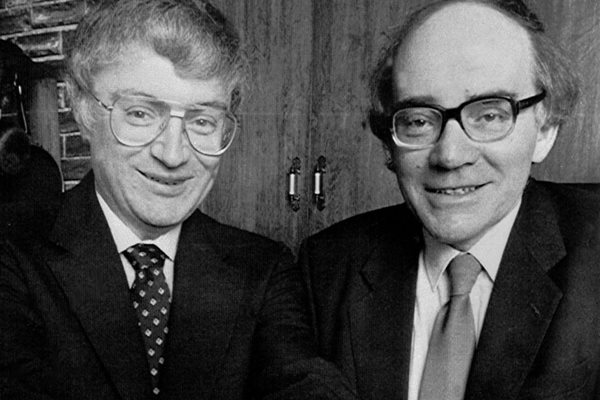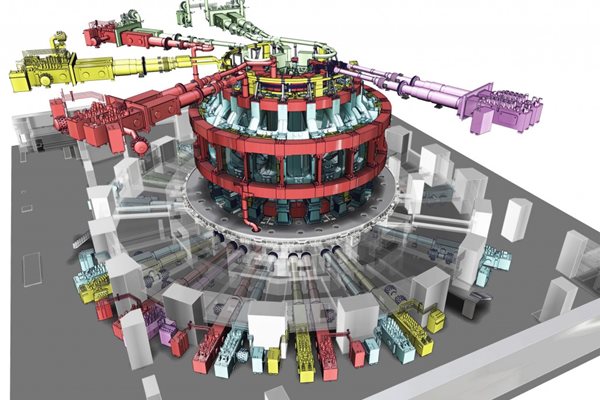
you're currently reading the news digest published from 08 Jul 2019 to 15 Jul 2019
featured4
press1
featured
Space propulsion | Have fusion, will travel
The idea of propelling rockets and spaceships using the power of the atom is nothing new: the Manhattan Project in the mid-1940s as well as countless endeavours by NASA in the following decades all explored the possibility of using fission-based reactions to provide lift-off thrust. Today, progress made in controlled nuclear fusion has opened a new world of possibilities. Fusion, which aims at 'bringing the power of the stars to Earth,' could also in a not-so-distant future help humans reach the stars from Earth. At space agencies worldwide, in university labs, and at start-up companies, nuclear fusion propulsion is on the agenda. In the United States, Congress approved USD 125 million in funding in May for the development of nuclear propulsion rockets and called upon NASA 'to develop a multi-year plan that enables a nuclear thermal propulsion demonstration' from both fission and fusion. The Russian space agency Roscosmos is working on a 'plasma rocket engine' in collaboration with the Kurchatov Institute—a project 'made possible by advances made in the study of plasma fusion processes. The Advanced Concept Team at the European Space Agency (ESA), in collaboration with European universities, is conducting a study on the feasibility of open magnetic confinement fusion propulsion. And China intends to develop a whole 'fleet' of nuclear carrier rockets by the mid-2040s (without specifying whether they will be fission or fusion-propelled). Rockets lift from their launchpad and vessels are propelled through deep space by the simple principle of action and reaction: heated exhaust gas is expelled at high speed through a nozzle and, in reaction, a thrust force is exerted on the vessel. Conventional rockets are propelled by chemical combustion, which requires considerable amounts of fuel—liquid hydrogen and liquid oxygen, or kerosene-like propellant—that are ignited at different stages of the ascent into space. Expelling hot gas is not the only way to provide thrust however: the father of modern rocketry Robert Goddard (who NASA's Goddard Space Center was named after) suggested in the 1900s that rockets could use electricity to eject electrons or charged ions with a velocity in the range of ~10 kilometres per second, twice as high as that of conventional exhaust gases. Propelling rockets by atomic bombs, detonated at very short intervals at the rear end of a rocket, was at one point contemplated. From 1958 to 1963 Project Orion, funded by the US Advanced Research Projects Agency (ARPA, today DARPA), the US Air Force, the Atomic Energy Commission and to a lesser extent NASA, aimed at precisely that. The ban on atmospheric nuclear tests in 1963 put an end to the project. Five years later however, in a Physics Today article titled 'Interstellar transport,' Project Orion's chief scientist Freeman Dyson suggested that 'deuterium fusion explosions' would provide even more thrust and velocity to the bomb-powered rocket and spaceship. Fifty years later, fusion is still a serious contender for space propulsion although not in its 'explosive' applications. Fusion reactors are now contemplated as a heat source that would bring propellant to extremely high temperature (and hence high-velocity exhaust), or expel ultra-hot plasma to provide thrust. Depending on the concept, the exhaust velocity of a fusion-propelled rocket would be in the range of 150-350 kilometres per second. Planet Mars could be reached in 90 days or even less, as compared to eight months with a conventional propulsion system. The intriguing moons of Jupiter and Saturn would be reachable in reasonable time and the way to exoplanets would open for exploration. Using the power of fusion to propel rockets to speeds otherwise unattainable, and hence dramatically shortening the duration of space travel, may sound like the stuff of science fiction. And literally, it is: in the 2014 blockbuster Interstellar, the spaceship that carries passengers on a quest for inhabitable planets is fuelled by 'compact tokamaks' which also provide the vessel's electricity. One of the problems is that tokamaks, the most promising of fusion devices in the present state of fusion technology, are all but compact: at 23,000 tonnes (not counting the mass of plant systems), ITER would be difficult to put into orbit. A fusion reactor, however, is not necessarily a tokamak. A NASA-funded joint venture between the University of Washington in Seattle and a small company named MSNW LLC focused on the development of advanced space propulsion systems has developed a small field-reversed pulsed-fusion device (akin to the spheromak concept of 1980s-1990s) to be extrapolated into a 'fusion drive engine.' Promoters of the project say that they are at work building the components of 'a fusion-powered rocket aimed to clear many of the hurdles that block deep space travel, including long times in transit, exorbitant costs and health risks.' In a similar move, the Princeton Plasma Physics Laboratory (PPPL) has entered into a collaboration with a company called Princeton Satellite Systems to work on a direct fusion drive engine for space exploration. Two years ago, NASA awarded a half-a-million dollar grant to the venture, which was also distinguished by a US Federal Laboratory Consortium award in October last year. In the projected direct fusion drive engine, fusion power would not be produced by the deuterium/tritium (DT) reactions of ITER or future electricity-generating plants. While the DT reaction is the most accessible in today's state of technology, it has two significant drawbacks, particularly for manned space exploration. Tritium is a radioactive element, and the fusion reactions produce a flux of highly energetic neutrons from which humans and electronic equipment must be heavily shielded. The deuterium/helium-3 reaction that is planned for the direct fusion drive engine has neither of these limitations: both elements are stable and so are the reaction products, hydrogen and helium. As the reaction is 'aneutronic,' no heavy shielding would be required for protection. There is, however, one big catch: the temperature required to fuse deuterium and helium-3 nuclei is about ten times higher than that required for DT fusion and no device has yet achieved this level of energy. (The present record is held by the Japanese tokamak JT-60U, which reached an ion temperature of half-a-billion degrees.) The developers of the direct fusion drive claim that their engine could be operational as early as 2028, which might appear to be a wildly optimistic projection. It might take decades before fusion propulsion quits the realm of science fiction and enters the reality of space travel. But among space-faring nations there is now a consensus, which the Department of Aeronautics and Astronautics at Washington University, one of the top aerospace schools in the United States, has clearly formulated: 'Fusion energy is, in principle, the only conceivable source of energy for rapid, efficient, rocket space travel to Mars, the outer planets, and nearby stars.'
Image of the week | Tokamak-sur-mer
At the height of the heat wave, in late June, surface temperature on the ITER worksite climbed to the 50 °C range. To continue work—and protect workers—a series of measures was implemented: the morning shifts began earlier, longer pauses were granted, and cool mist vaporizers were installed throughout the worksite. Brightly coloured umbrellas complemented the heat protection system, giving casual observers the impression that an apéritif was being served on the beachfront.
Cold fusion | End of story?
Thirty years ago, two electrochemists at the University of Utah, Martin Fleischmann and Stanley Pons, created a sensation when they claimed they had achieved fusion at room temperature in a tabletop experiment. The concept of 'cold fusion' was not new. As early as the 1920s, physicists had speculated that the fusion of hydrogen could occur in an electrolytic cell in the presence of a palladium catalyst. The theory failed to receive much consideration until the Fleishmann-Pons announcement in March 1989. Although the experiment's detailed protocol was not divulged, the scientific status of Fleischmann, then one of the world's leading electrochemists, lent credibility to the claim. Researchers and labs throughout the world attempted to reproduce the experiment, but failed to obtain conclusive results. A major controversy ensued, the scientists' 'honesty' was challenged, and major scientific journals and institutions eventually closed the case as pipe dream or worse—as a blatant example of 'pathological science.' This reaction from mainstream science did not deter hundreds of scientists throughout the world from pursuing the quest. In 2015, more than a quarter century after the Fleischmann and Pons experiment, Google launched a research program of its own. The USD 10-million project was revealed to the general public in May when researchers with the Internet giant admitted that they had found 'no evidence whatsoever' in favour of cold fusion. Google's lack of results, however, is not likely to put an end to the pursuit. Like the quest for the philosophers' stone, the dream of cold fusion will endure and keep modern-day alchemists busy.
Magnet feeders | Wave of deliveries ahead
Several batches of magnet feeder components will arrive from China in September containing elements that need to be received, inspected and readied for installation early in the ITER assembly schedule. The feeder team describes the arrivals as a 'first trickle' before the wave of deliveries planned between 2020 and 2023. Over the next four years, all the constitutive elements of the ITER magnet feeders must arrive on site to be installed in carefully coordinated sequences as part of the global machine assembly plan. That represents more than 1,600 tonnes of equipment and approximately 100 large components. Some of the elements arriving in September are 'captive,' meaning that they need to be installed in advance of other large components in the lower region of the Tokamak machine due to their size or position. Two are so large that they will be packaged in crates measuring 20 x 10 metres—nearly the size of a tennis court—requiring handling as Highly Exceptional Loads as they travel by barge and road to the ITER site from the Mediterranean Sea. ITER's Chen-Yu Gung, who leads the Magnet Feeder Group, compares the sequencing plan to the rules that govern traffic on the roads: 'If there is a violation during the assembly process, and sequencing is not followed scrupulously, this could lead to clashes and gridlocks.' Counted among the largest systems to be procured for the machine, ITER's 31 magnet feeders cover distances of 30 to 50 metres to ferry cryogens, power and instrumentation from the 'warm' exterior environment outside the machine and cryostat in to the 'cold' superconducting magnets operating at minus 270 °C. Under the procurement responsibility of ITER China, each feeder is manufactured in three fully instrumented segments, which are shipped to ITER for final assembly on site. Farthest from the machine core will be the nine-metre-long coil termination box, shaped and sized like a shipping container, which houses warm-to-cold electrical transition equipment, remote control helium supply valves, and sensors for coil instrumentation. Situated outside of the concrete bioshield, it can be easily accessed for maintenance. Next is the duct-like cryostat feedthrough, which provides a conduit for the power, cryogenic and instrumentation equipment as it passes through the concrete bioshield and cryostat and into the vacuum environment. The first of these—the cryostat feedthrough for poloidal field coil #4—was installed in the Tokamak Pit last year. (As the only one with a unique elbow bend, it had to take its place in a lower gallery before the concrete foundation ring supporting the cryostat was completed.) Finally, the in-cryostat feeder is the segment that actually connects to the superconducting coils. These components take on a variety of shapes as they bend and turn inside the crowded space of the cryostat to reach the magnet connections. The largest elements arriving in September—two semi-circular-shaped in-cryostat feeders for the bottom correction coils—fall into this category. The work to join the feeder segments will be carried out on site by specially trained contractors. The highly complex components inside the feeders (high-current busbars, high voltage cable conduits, cryolines, etc.) must be connected before the exterior casing is sealed. The most delicate—and complex—part of the job is the realization of 228 superconducting joints to connect different segments of the busbars, or to connect the busbars to the coil terminals. (More on the challenges of superconducting joints here.) 'Feeder assembly is one of the major machine assembly activities, representing just over 11 percent of the total Tokamak machine baseline workload,' says Patrick Petit, leader of the In-Cryostat Assembly Section. 'As a first-of-a-kind and technically complex technology, the activity will require time and high level of supervision and quality control.' On average, it will take 8 months to assemble one feeder (from the gallery to the coil terminal) including cabling and joints. Superconducting joints will take around 1.5 months each. 'It's easy to see the challenge we are facing in planning for the assembly of all 31 feeders, especially given the number of other parallel activities related to machine assembly inside of the cryostat and the tight schedule to finishing the work before cryostat closure in late 2024.' Patrick's team has clearly defined the construction work packages for feeder assembly and developed the logical sequencing of work within the highly integrated Tokamak assembly scenario. For the complex joint operations, the team is enhancing the operational guidelines that were developed during the qualification phase of individual processes. A space for training and certifying technicians and inspectors in advance of the first assembly activities is also foreseen. 'Strictly controlling operator skill as well as each assembly task is the best way to ensure the quality of these joints, which have a critical role to play in the proper functioning of the ITER magnets,' according to Patrick and Chen-Yu. 'We fully understand the stakes and we are ready for the challenge.'



